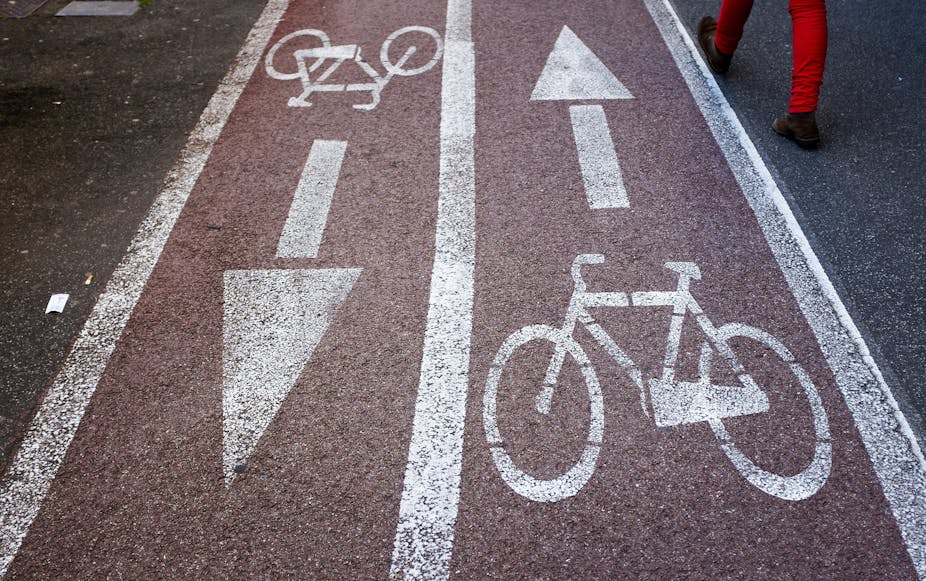My morning commute to work in Johannesburg takes me past city streets flanked by the strange strips of green-painted road surface that some people call “bicycle lanes”. But to call them that flies in the face of experience.
Usually these lanes are occupied by cars using them as makeshift parking bays; taxis veering to a halt to drop off or pick up passengers – and very occasionally by a brave pedestrian. The one thing I’m pretty confident of never seeing in these lanes is a bicycle.
This isn’t a rant about roads, though. It’s an example that calls attention to an inconvenient fact for policymakers who must make decisions about how to improve societies. Successful policy interventions, especially those in the social realm influenced by the vagaries of human behaviour, don’t seem to travel well.
To paraphrase philosopher Nancy Cartwright’s warning: “Just because it worked there, doesn’t mean it will work here”. Policies and interventions that work really well in one context often fail dismally in others. These failures can be extremely difficult to pre-empt.
Johannesburg’s cycling lane debacle nicely illustrates a research problem known as external validity. This is basically about determining whether causal relationships transport to different environments or can be generalised across many environments. Simply put, the puzzle is why cycling lanes cause a reduction in traffic in some cities but not in others.
Different contexts, different solutions
The failure of Johannesburg’s cycle lanes has very little to do with the way they were implemented. The real problem is that policymakers should have foreseen that cycle lanes were never the right intervention in the first place, if the aim was to find an effective way of alleviating the city’s traffic problem.
It’s easy to be smug with the benefit of hindsight. But if we consider things from the perspective of those who had to make the decision, opting for the cycle lanes isn’t as risible as it seems now. Their thinking must have gone as follows:
“We have a serious traffic problem. What have other big cities done to improve congestion? Answer: bicycle lanes. Solution: build bicycle lanes.”
The mistake, I believe, was trying to import a successful mechanism – in this case in the form of infrastructure – from a different context, and expecting it to have the same effect in the local environment. Demonstrating the effectiveness of these mechanisms is one thing. It’s inferring from this effectiveness that the same mechanism will be effective in other contexts that can easily lead people astray.
Modern science is becoming increasingly adept at developing sophisticated methods for discovering mechanisms that underpin causal relationships.
This approach has worked well in the health sciences. It continues to yield important new breakthroughs in our knowledge about lifestyle factors in cancers. Attempts to identify similar mechanisms in the social sciences often result in failure. Nancy Cartwright’s discussion of the failure of the World Health Organisation’s nutrition programme in Bangladesh is a good example. Its success in India was falsely thought to be a good reason to implement it elsewhere.
Thinking this way would have encouraged the false opinion that as long as Johannesburg copied the correct mechanism, its traffic problem would be solved.
A more illuminating approach to dealing with external validity problems is to start with an analysis of the “human ecosystem” that brings about the conditions responsible for the problem. In the same way that we pay attention to the conditions that support life in natural ecosystems, this view encourages us to identify similar conditions for human populations
Human ecosystems thinking
In diagnosing Johannesburg’s traffic congestion, attention should have been paid to some fundamental questions about the broader socio-economic factors influencing the city’s transportation network. This should have included a thorough analysis of where people live and work, how far they have to travel and why they choose their preferred methods of transport.
One factor that such thinking would have unearthed is the spatial separations brought about by apartheid. Townships, where a significant proportion of the city’s workforce live, are situated on the outskirts of the metropolis. That’s far away from the city’s economically active areas where the bulk of the jobs are.
So, the people most adversely affected by Johannesburg’s traffic problem live too far from their workplaces to even consider cycling as a feasible solution. Those who can afford to live closer to their jobs are typically not tempted by the little money they would save.
This is why the city’s cycling experiment fell short of the critical mass needed to make it work.
A big advantage of this type of ecosystems thinking is that, instead of misguided attempts at importing foreign solutions, it encourages us to attend to local problems by paying closer attention to the local context. Policymakers are pushed to develop solutions inspired by local knowledge and sensibilities.
A more locally-driven approach would instead emphasise practical ways of linking township residents with more economically active areas. This might be done by expanding existing infrastructure which already does this, such as the Rea Vaya bus routes. Or some jobs might be moved to townships.
Some of the solutions inspired by an ecosystems approach might seem unconventional at first – because they would be unprecedented. But this was the way people felt about innovations like Kenya’s M-Pesa mobile money system. If we want bespoke solutions to unique local problems, we shouldn’t expect to find them elsewhere.

